Looking at the universe through very different 'eyes'
- Written by Michael J. I. Brown, Associate professor, Monash University
We are bathed in starlight. During the day we see the Sun, light reflected off the surface of the Earth and blue sunlight scattered by the air. At night we see the stars, as well as sunlight reflected off the Moon and the planets.
But there are more ways of seeing the universe. Beyond visible light there are gamma rays, X-rays, ultraviolet light, infrared light, and radio waves. They provide us with new ways of appreciating the universe.
Read more: What to look for when buying a telescope
X-ray Moon
Have you looked at the Moon during the daytime? You will see part of the Moon bathed in sunlight and the Earth’s blue sky in front of the Moon.
 The Moon behind a blue sky.
Flickr/Ed Dunens, CC BY
The Moon behind a blue sky.
Flickr/Ed Dunens, CC BY
Now put on your X-ray specs, courtesy of the ROSAT satellite, and you will see something intriguing.
The Sun emits X-rays, so you can see the daytime side of the Moon easily enough. But the night time side of the Moon is silhouetted against the X-ray sky. The X-ray sky is behind the Moon!
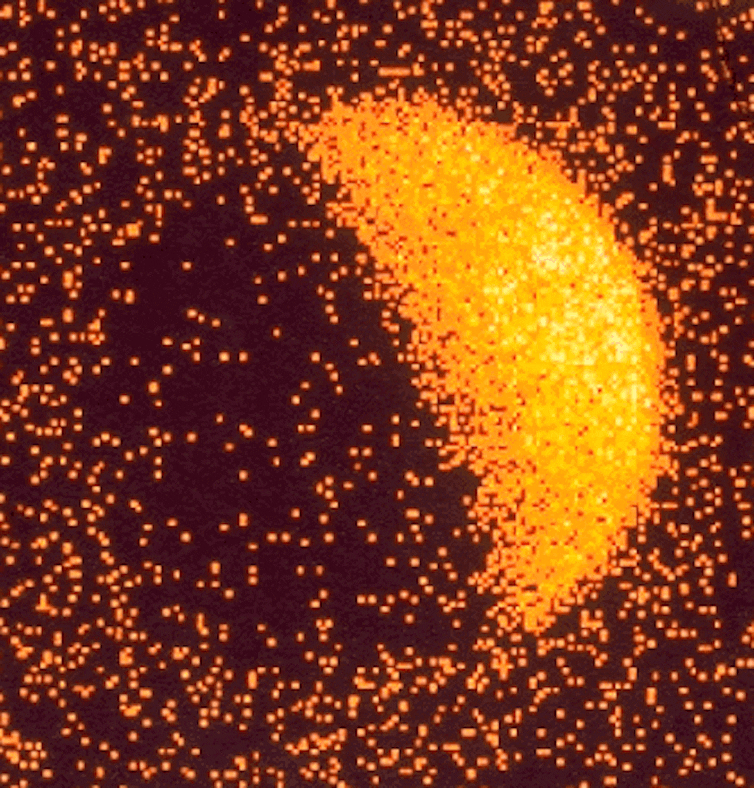 The Moon seen in X-rays by ROSAT. The night side of the Moon is silhouetted against the X-ray background.
DARA, ESA, MPE, NASA, J.H.M.M. Schmitt
The Moon seen in X-rays by ROSAT. The night side of the Moon is silhouetted against the X-ray background.
DARA, ESA, MPE, NASA, J.H.M.M. Schmitt
Just what is the X-ray sky? Well, X-rays are more energetic than visible light photons, so X-rays often come from the hottest and most violent celestial objects. Much of the X-ray sky is produced by active galactic nuclei, which are powered by matter falling towards black holes.
In X-rays, the Moon is silhouetted against many millions of celestial sources, powered by black holes, scattered across billions of light years of space.
Radio skies
If you’re in the southern sky and away from light pollution (including the Moon), then you can see the Small Magellanic Cloud. This is a companion galaxy to our own Milky Way. With the unaided eye it looks like a diffuse cloud, but what we are actually seeing is the combined light of millions of distant stars.
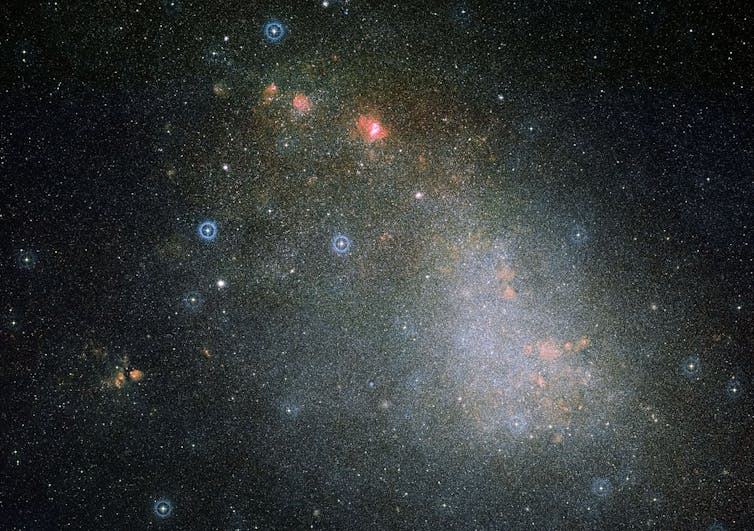 Visible light images of the Small Magellanic Cloud are dominated by starlight.
ESA/Hubble and Digitized Sky Survey/Davide De Martin
Visible light images of the Small Magellanic Cloud are dominated by starlight.
ESA/Hubble and Digitized Sky Survey/Davide De Martin
Radio waves provide a very different view of the Small Magellanic Cloud. Using the Australian Square Kilometre Array Pathfinder, tuned to 1,420.4MHz, we no longer see stars but instead see atomic hydrogen gas.
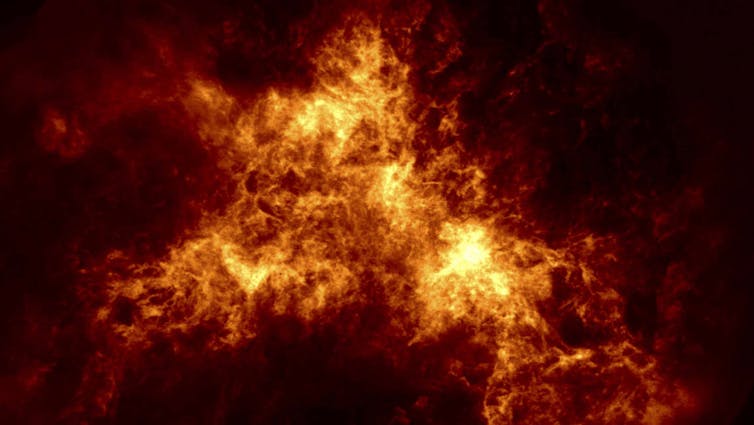 Radio waves can trace the hydrogen gas in the Small Magellanic Cloud.
ANU and CSIRO
Radio waves can trace the hydrogen gas in the Small Magellanic Cloud.
ANU and CSIRO
The hydrogen gas is cold enough that the atoms hang onto their electrons (unlike ionised hydrogen). It can also cool further and collapse (under the force of gravity) to produce clouds of molecular hydrogen gas and eventually new stars.
Radio waves thus allow us to see the fuel for star formation, and the Small Magellanic Cloud is indeed producing new stars right now.
Feeling the heat in the microwave
If the universe were infinitely large and infinitely old, then presumably every direction would eventually lead the surface of a star. This would lead to a rather bright night sky. The German astronomer Heinrich Olbers, among others, recognised this “paradox” centuries ago.
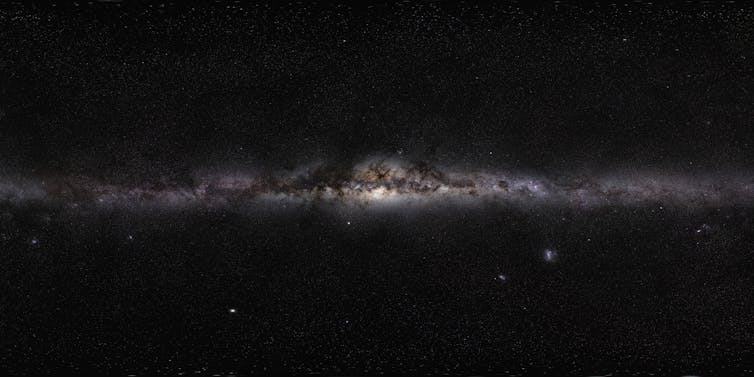 A visible light image of the entire night sky is dominated by starlight from the Milky Way.
ESO/S. Brunier, CC BY
A visible light image of the entire night sky is dominated by starlight from the Milky Way.
ESO/S. Brunier, CC BY
When we look up at the night sky, we can see the stars, planets and Milky Way. But most of the night sky is black, and this tells us something important.
But lets take a look at the universe in microwave light. The Planck satellite reveals glowing gas and dust in the Milky Way. Beyond that, in every direction, there is light! Where does it come from?
 The microwave sky is glowing in every direction.
ESA, HFI & LFI consortia
The microwave sky is glowing in every direction.
ESA, HFI & LFI consortia
At microwave wavelengths we can observe the afterglow of the Big Bang. This afterglow was produced 380,000 years after the Big Bang, when the universe had a temperature of roughly 2,700℃.
But the afterglow we see now doesn’t look like a 2,700℃ ball of gas. Instead, we see a glow equivalent to -270℃. Why? Because we live in an expanding universe. The light we observe now from the Big Bang’s afterglow has been stretched from visible light into lower-energy microwave light, resulting in the colder observed temperature.
Planetary radio
Jupiter is one of the most rewarding planets to observe with a small telescope – you can see the cloud bands stretching across the giant planet. Even binoculars can reveal the four moons discovered by Galileo centuries ago.
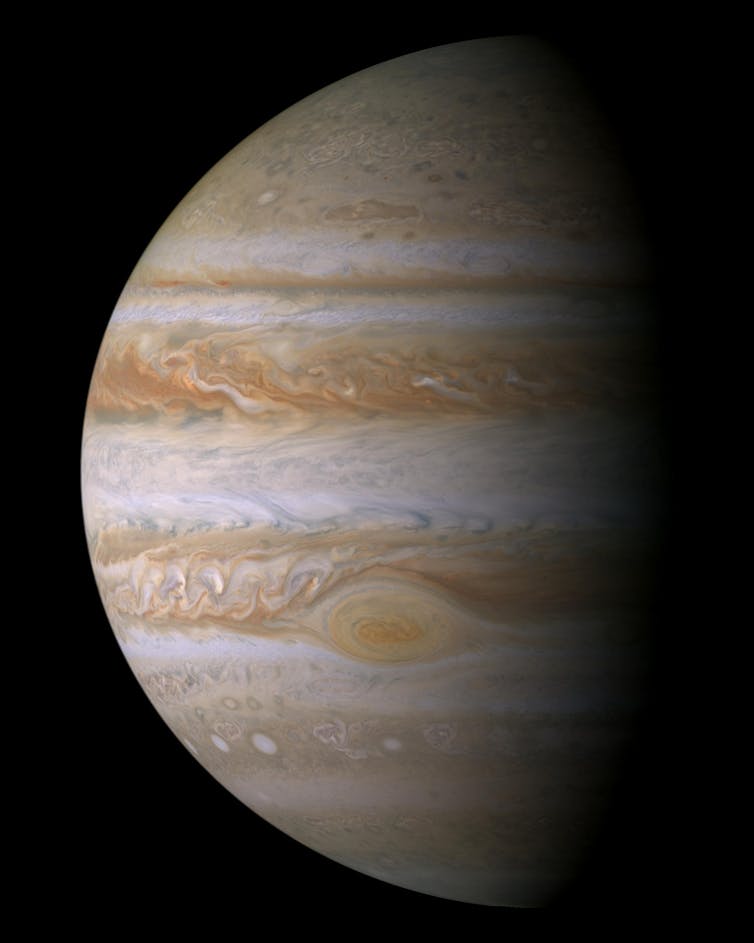 A visible light image of Jupiter, taken by the Cassini spacecraft.
NASA/JPL/Space Science Institute
A visible light image of Jupiter, taken by the Cassini spacecraft.
NASA/JPL/Space Science Institute
But you get a less familiar view of Jupiter when you switch to radio waves. A radio telescope reveals the dull warm glow of the planet itself. But what really stands out are radio waves coming from above the planet.
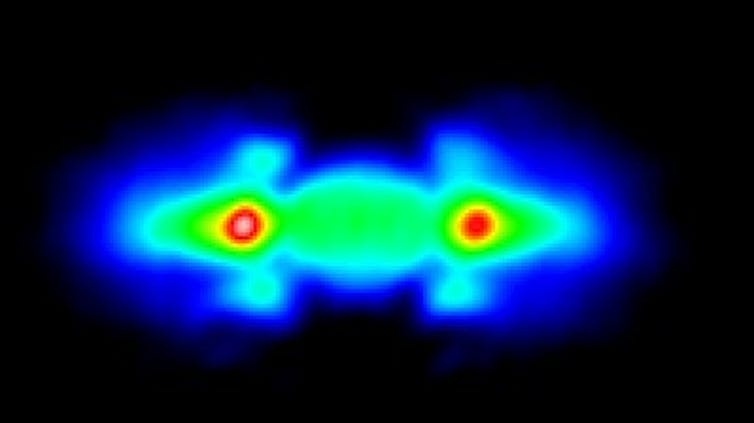 Jupiter is a copious emitter of radio waves.
CSIRO
Jupiter is a copious emitter of radio waves.
CSIRO
Much of the radio emission from Jupiter is produced by synchrotron and cyclotron radiation, which results from speeding electrons spiralling in a magnetic field.
Read more: Fifty years ago Jocelyn Bell discovered pulsars and changed our view of the universe
On Earth we use particle accelerators to produce such radiation. But in Jupiter’s powerful magnetic field it occurs naturally (and copiously).
The synchrotron produced by Jupiter is so powerful that you can detect it on Earth – not just with multimillion-dollar radio telescopes, but with equipment that can be bought for several hundred dollars. You don’t need to be a professional astronomer to expand your view of the universe beyond visible light.
Authors: Michael J. I. Brown, Associate professor, Monash University
Read more http://theconversation.com/looking-at-the-universe-through-very-different-eyes-86068



